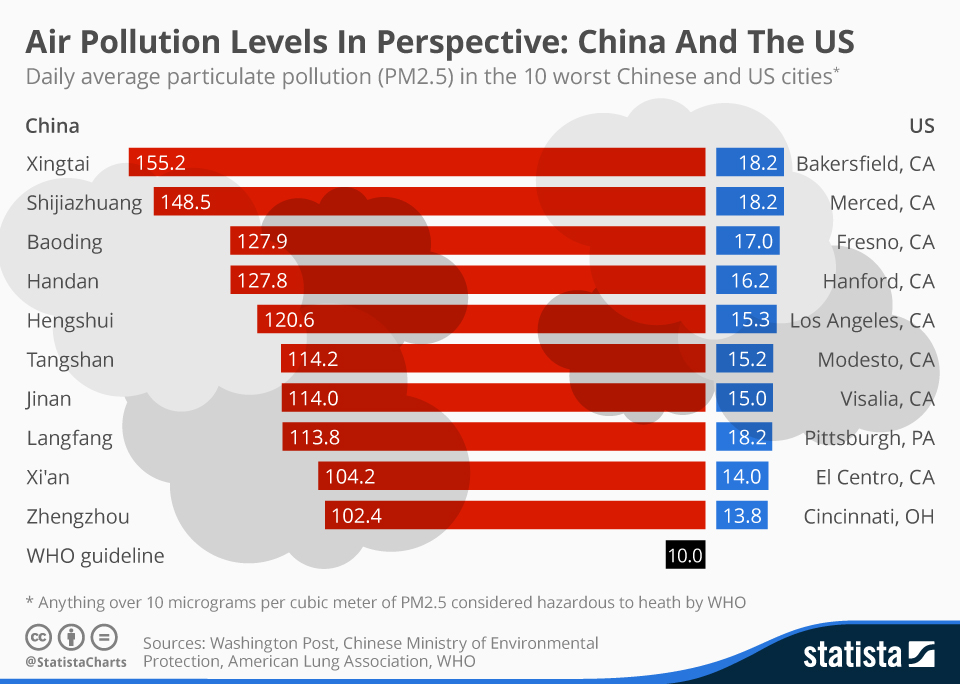Even though Chinese officials have pledged to reduce the country's rolling clouds of smog, air pollution levels in many cities have soared to over twenty times the safe limit on several occasions over the past year. Small airborne pollutant particles called PM2.5 can cause harm to the lungs when ingested. The World Health Organization has said that anything over 10 micrograms per cubic meter of PM2.5 can be dangerous, causing asthma, cardiovascular disease and cancer.
The sheer scale of China's air pollution problem can be seen on the following infographic. Xingtai, Shijiazhuang and Baoding have daily average PM2.5 levels of 155.2, 148.5 and 127.9 respectively. By contrast, the worst city for air pollution in the United States, Bakersfield California, has a daily average PM2.5 level of just 18.2. China's extensive use of coal-fired power plants to fuel its economic growth is the main reason for the country's disastrous air pollution levels. Seven of China's ten most polluted cities are located in Hebei province which is a major centre for the steel industry as well as glass and cement production.
Air Pollution Levels In Perspective: China And The US

Description
This chart shows daily average particulate pollution (PM2.5) in the 10 worst Chinese and US cities.




















